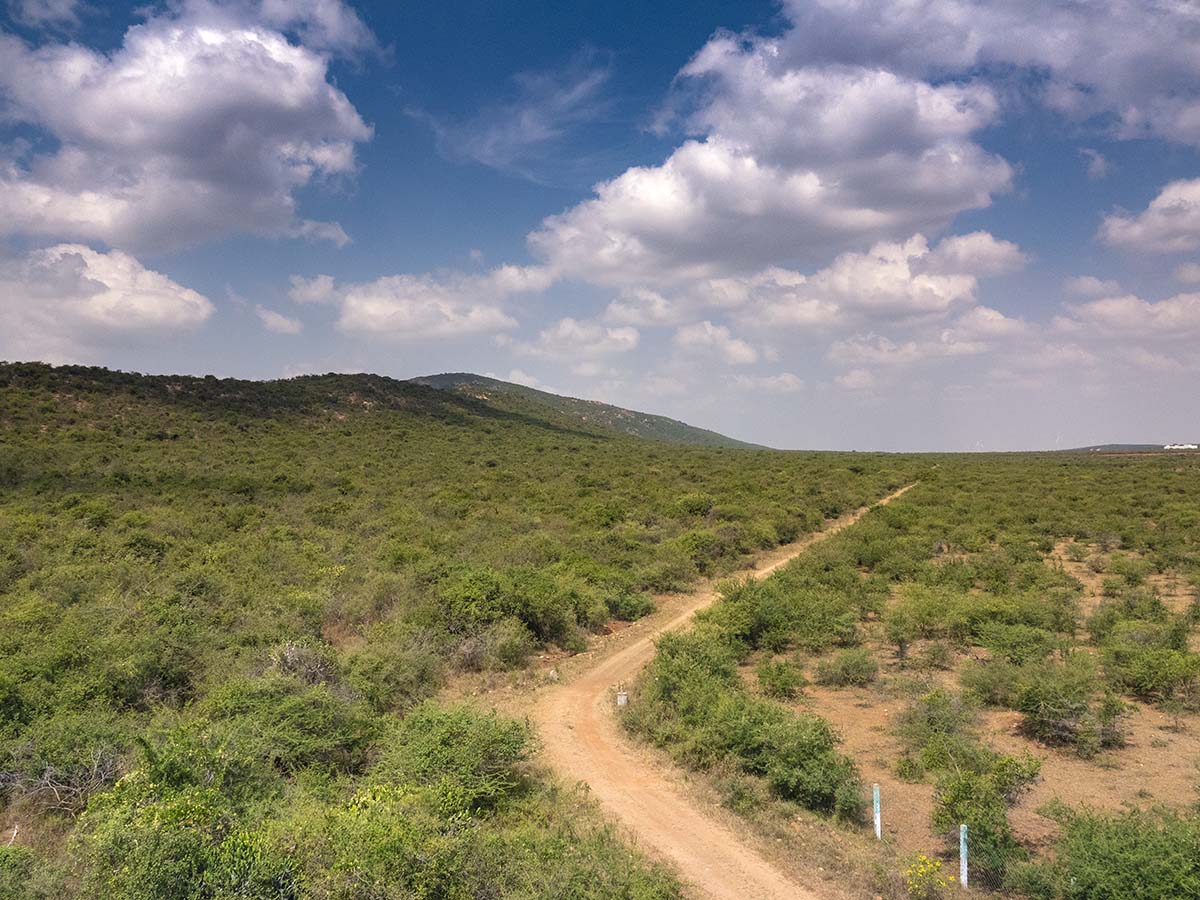
Vallanadu wildlife sanctuary is a small sanctuary of 16.4 sq.kms created for the protection of the Indian antelope / Blackbuck. This blackbuck protection sanctuary is located at Tuticorin in Tamilnadu. The blackbuck population was spread across India in earlier times but with hunting and habitat destruction , their population is now restricted in few isolated forest patches. In Tamilnadu they are seen in Point calimere , Vallanadu and Guindy National Park. As Vallanadu is very close to Nagercoil, we always wished to visit this Blackbuck sanctuary. Tourists are not allowed in this sanctuary, hence we didn’t get a chance to see this Vallanadu blackbuck sanctuary.
In 2022, we got an opportunity to visit Vallanadu Blackbuck Sanctuary and we seized it to explore knook and corner in the sanctuary. The blackbuck habitat is open grassland which is a rarity in India especially in Tamilnadu as every cent of land is named to some human being. Also politicians being the main land grabbers , any open land is just a soon to be plot.
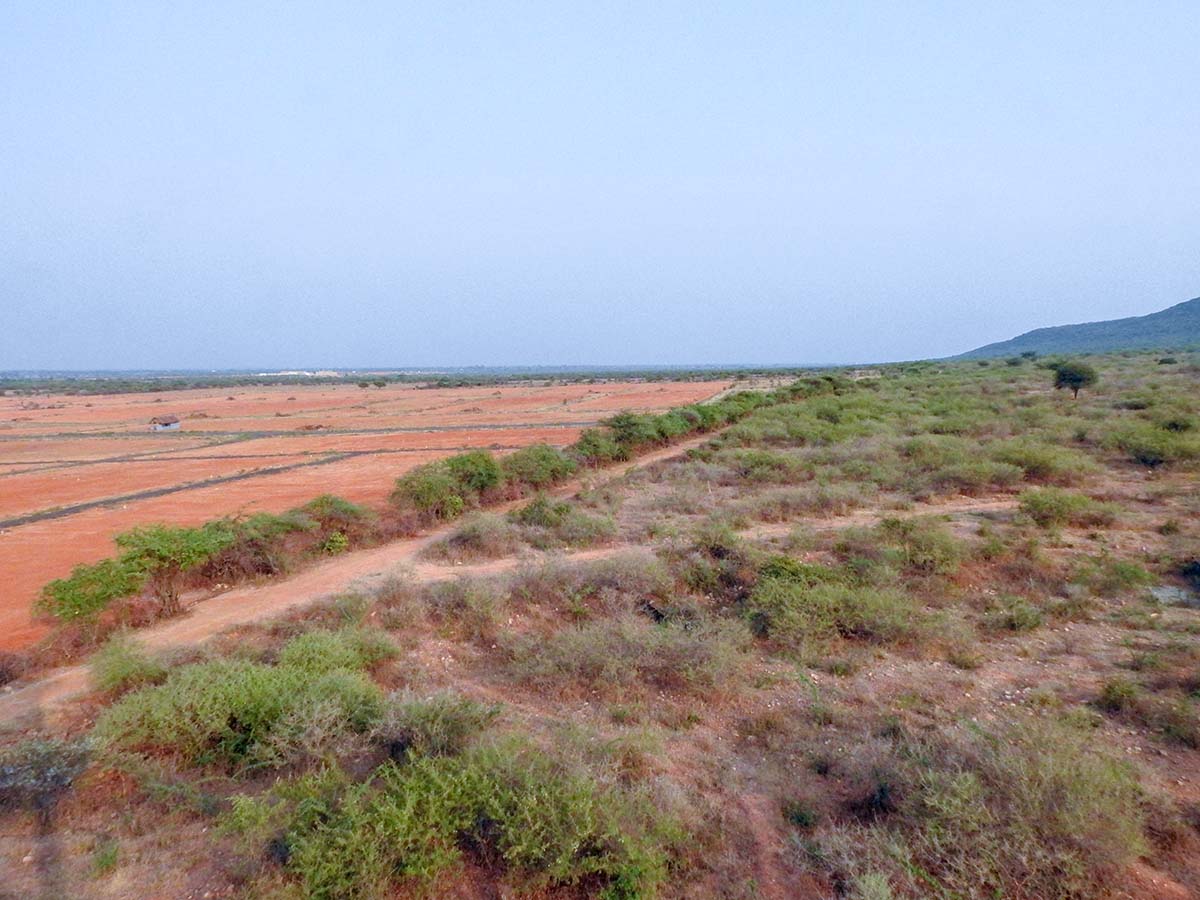
” Vinod and myself were wondering how in the hot real estate area was there a small grassland patch for the blackbucks ? “
From the moment we stepped inside the sanctuary, we were asking everyone where is the grassland! All we were seeing is a small hillock with shrubs. The peak of the hillock is the highest point in Tuticorin district. We climbed to the peak which is not a tough climb but we visited the sanctuary in the peak summer season so we got drained out in that hot sun.
There is no natural water source inside the sanctuary. One border of the sanctuary is Agricultural university which extends to more than 500 acres and another border is an unused private land. We walked crisscross through the sanctuary and didn’t find any grassland patches. We were disappointed as the terrain we expected was totally different, but we consoled ourselves that atleast the shrubs are native ones.
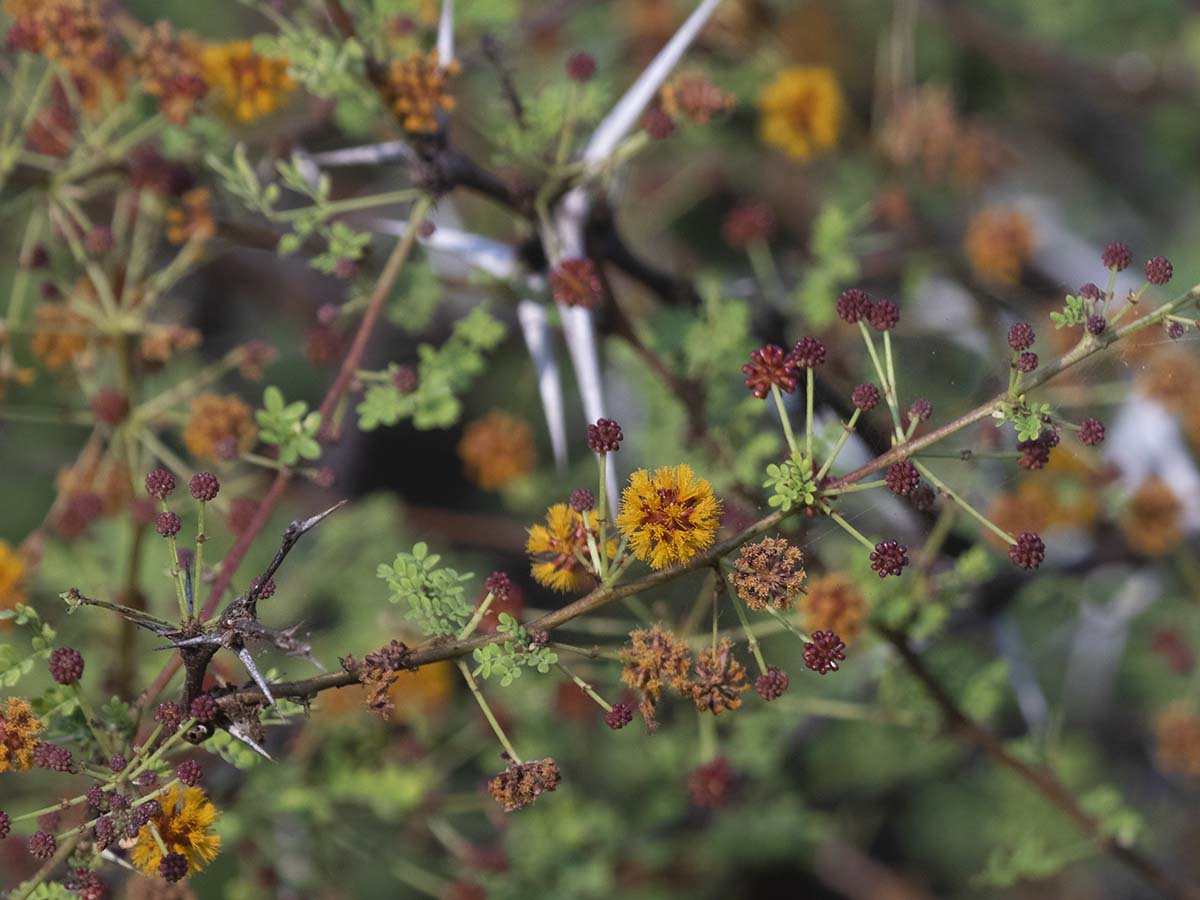
Dichrostachys cinerea, Vachellia horrida are few of the common shrubs found inside the sanctuary. We visited the sanctuary with the team members of Atree NGO and it was quite fun to survey the butterflies, birds and blackbucks along with them. We counted around 55 butterfly species in the dry season and we believe the total butterfly species inside the santuary will exceed 75 species.
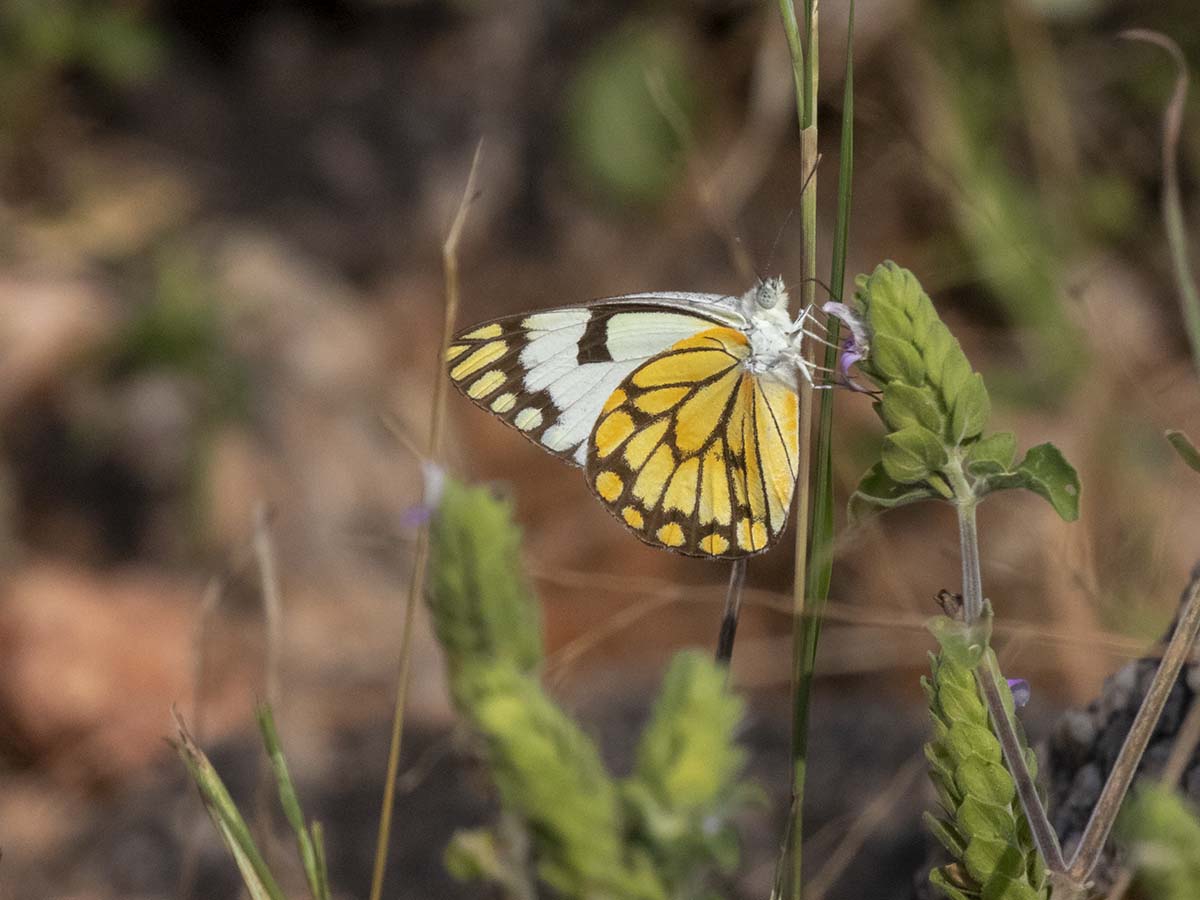
I loved the evenings inside the sanctuary as we could watch the harriers returning back to their roosting sites inside the reserve. Their casual hovering with the twilight sky as background was truly a delight to watch. Crepsuscular mammals like Black-naped hare slowly start their activities at this time. Usually I don’t get the opportunity to see wildlife activities once the Sun sets down as the Forest Department never allows human activities inside the forest after 5 P.M.
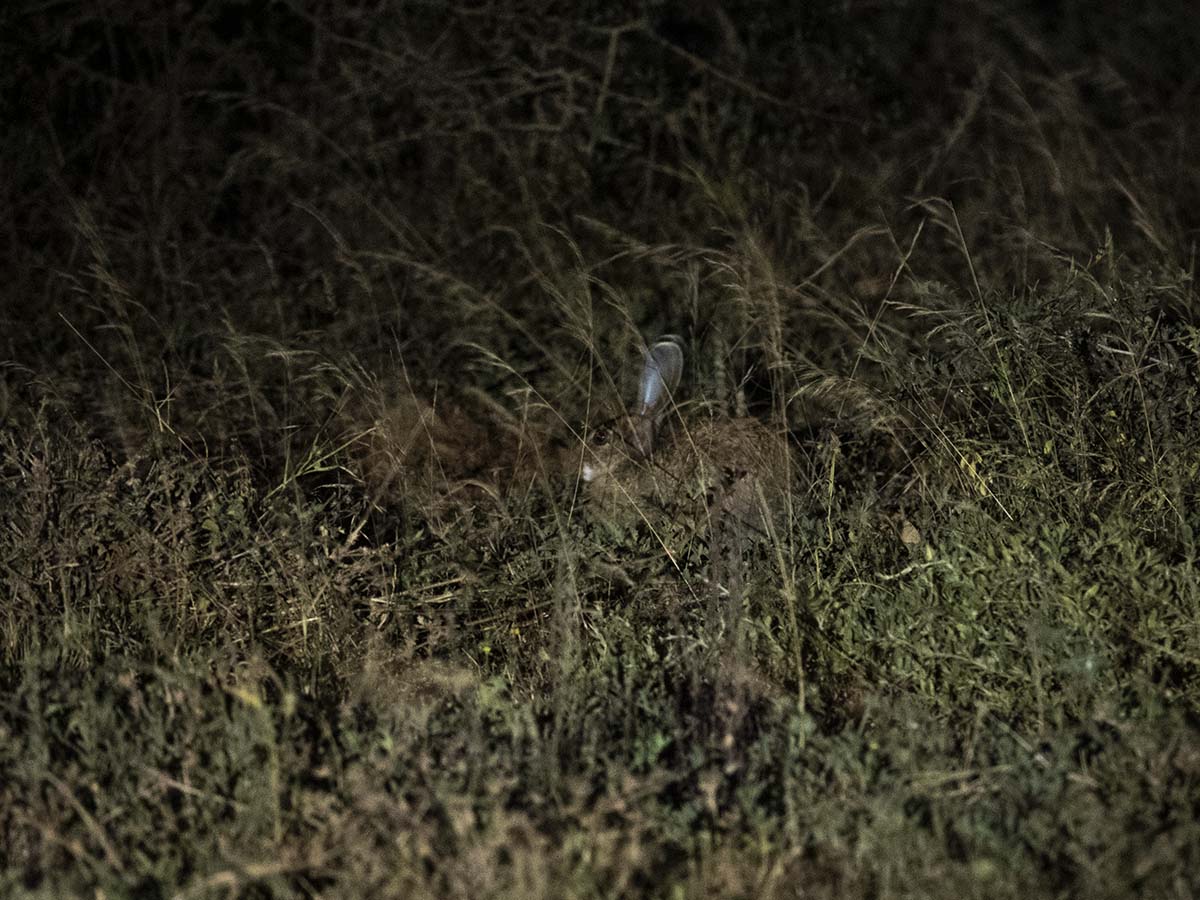
Other wildlife areas are occupied by drunkards at that time. So I was using the rare chance to watch the wildlife activities at twilight and night times till my body couldn’t take more. Also, we were having the nocturnal expertise Dr.Thanigaivel who is a dear friend to us. He is great in spotting the snakes with an ease that comes only with years of experience in the field.
I have to be frank that my senses were not very active at night and I found it tough to spot the movements at night. So I was happy with the stuffs that these experts show to me by pointing the torchlight close to the subject in interest. We got to see Indian gerbil though not very closely but a glimpse , Indian Porcupine a close encounter but he hurriedly went inside a bush, Termite hill gecko catching a grasshopper and Sambar deer crossing the trail. Apart from these , we saw plenty of Indian nightjars and we were hearing their calls continuously without any break. Also, the Indian Thicknees start their calls at evening but their call was not very continuous like the nightjar.
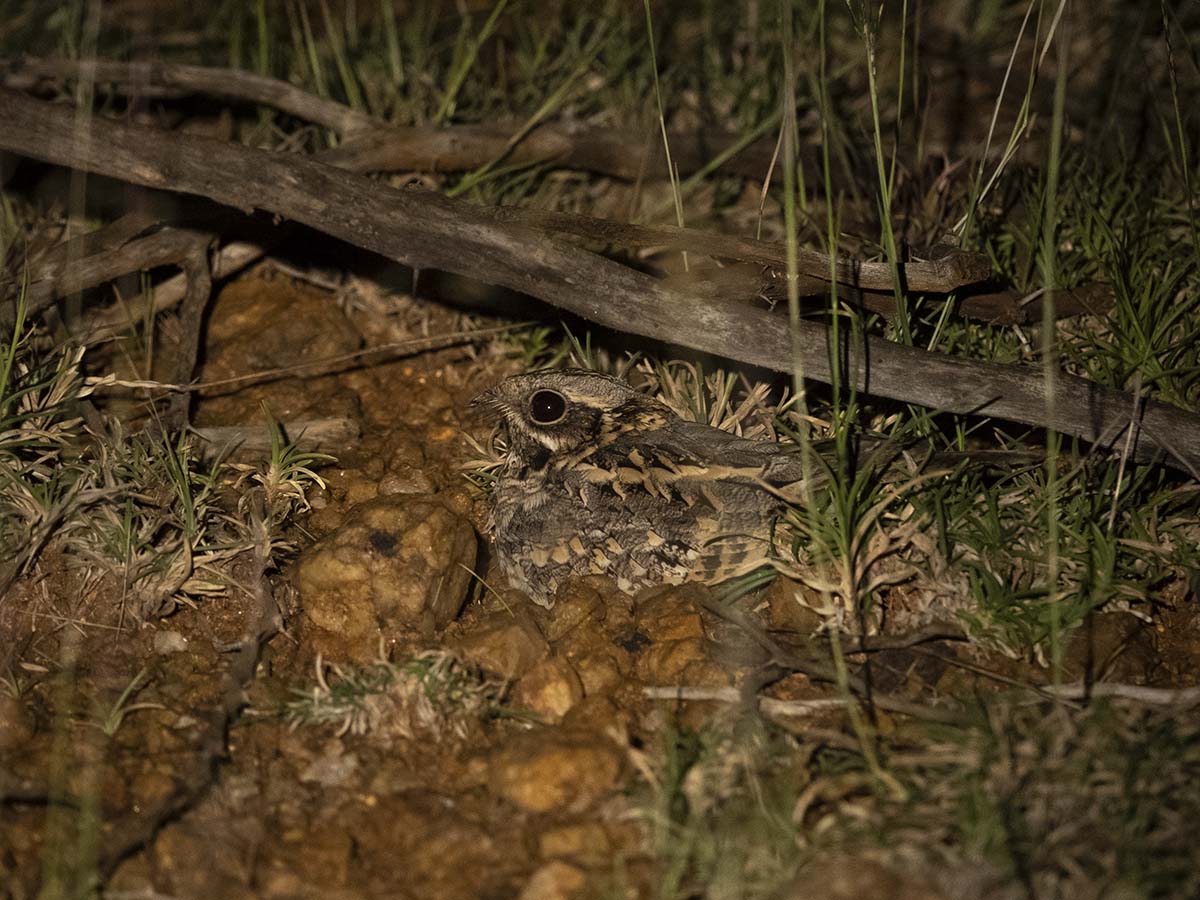
Sighting of Indian Rock Python
The first time we visited Vallanadu, there were few rescues of Indian Rock Python by Forest deparment from the village nearby. They brought it to the forest for the release at midnight. That was the first time I was seeing a rock python so closely. Vinod and Thanigaivel helped the forest department with the snakes as they were trying to release three snakes of length more than 8 feet. I maintained a decent distance from the snakes and just observed them.
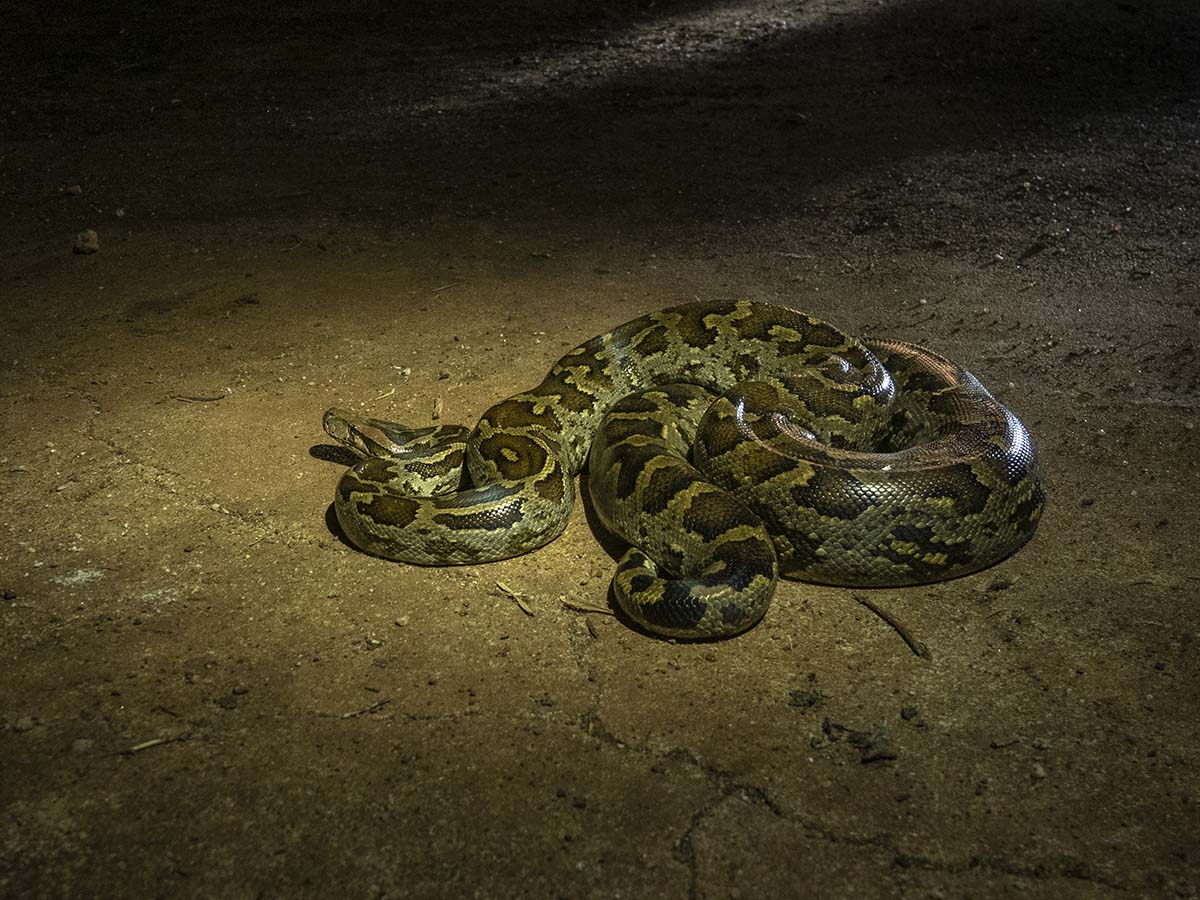
I can feel the muscle power of the pythons by the way they twist and move but they didn’t wish to show the power to us. They just wanted to escape from the humans and go out to someplace quiet. They moved out so quickly and I have to say , I kept on looking my back that entire night to see whether any of those pythons come back for some revenge. I agree that I have seen too much “Anaconda” movies !!
When we went to Vallanadu the third time, Vinod got the eye to spot at night. He spotted many interesting sightings like Brown land crab , Saw scaled viper , common sand boa etc.
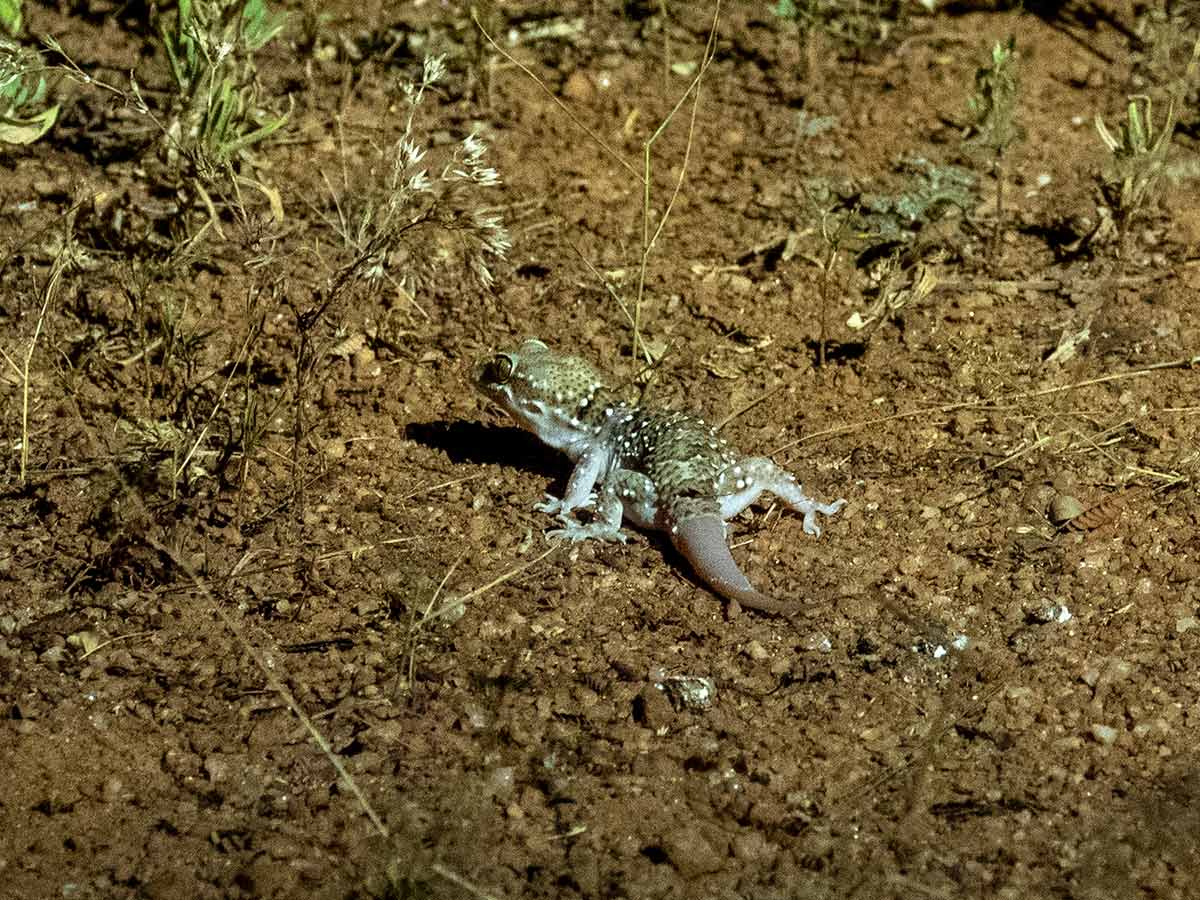
The nights were also sweaty in Vallanadu like the days but after midnight it got cool. The scorching sun in the day made us all so tiring that we had to visit the vallanadu village to have some cool fruit drinks and sugarcane drinks. We were all drinking water continuously but it was never enough. In all our three visits to Vallanadu, we always felt dehydrated. So I am not sure how the wild beings survive in the sanctuary without any water source.
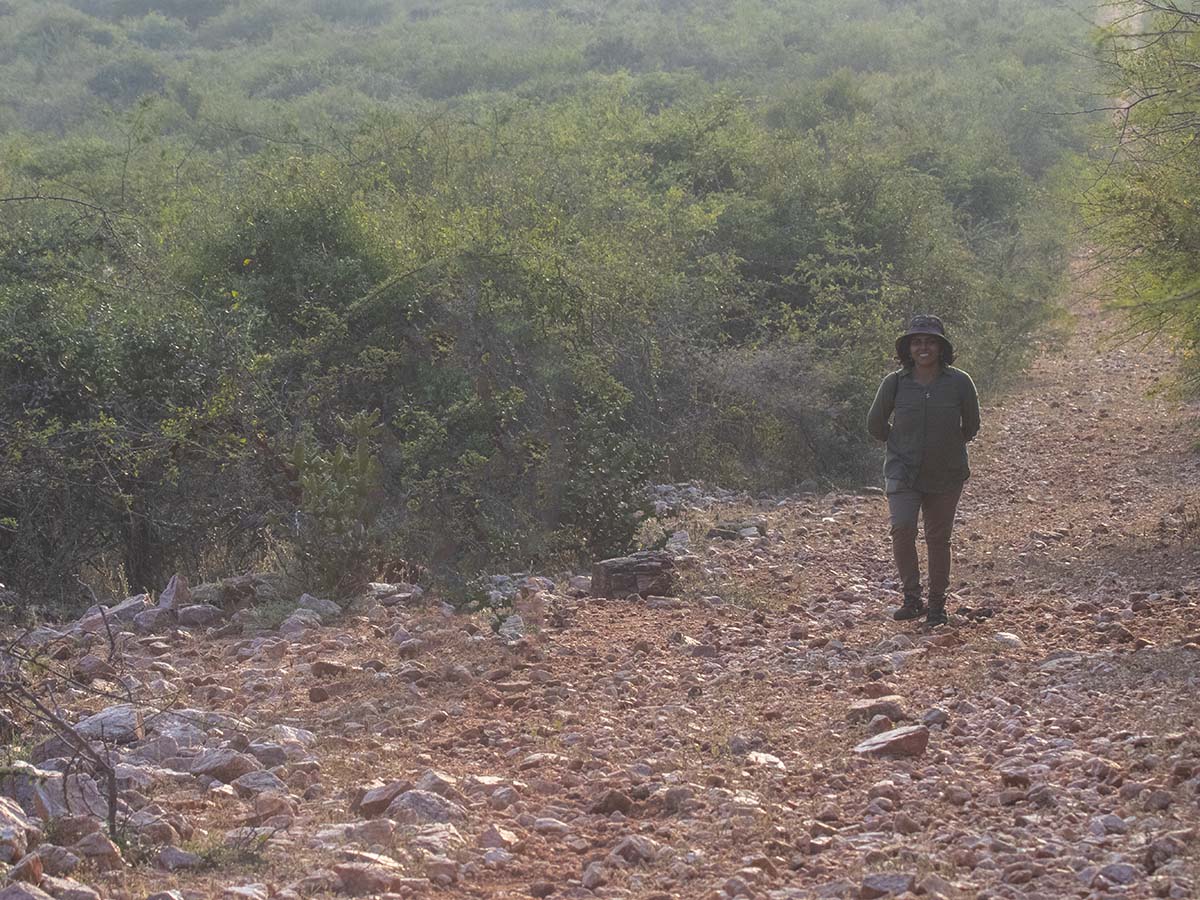
The first time we visited Vallanadu, we went for a drive to the private land next to the reserve forest. It was an open unused land with grass patches where we saw Indian blackbucks, Black-naped hares, Indian gerbil, Montagu harrier, Long-legged buzzard and many other little creatures. The second time we went there , few grass patches were removed using JCB by the owner of the land. And on our third visit all we could see was just mud and stones were kept to mark the plot layouts. JCB was still working to uproot all the grasses, bushes in that area. As the area was just wide open now , we could see birds like Chestnut-bellied Sandgrouse , Indian Courser and Ashy crowned sparrow larks playing on the ground.
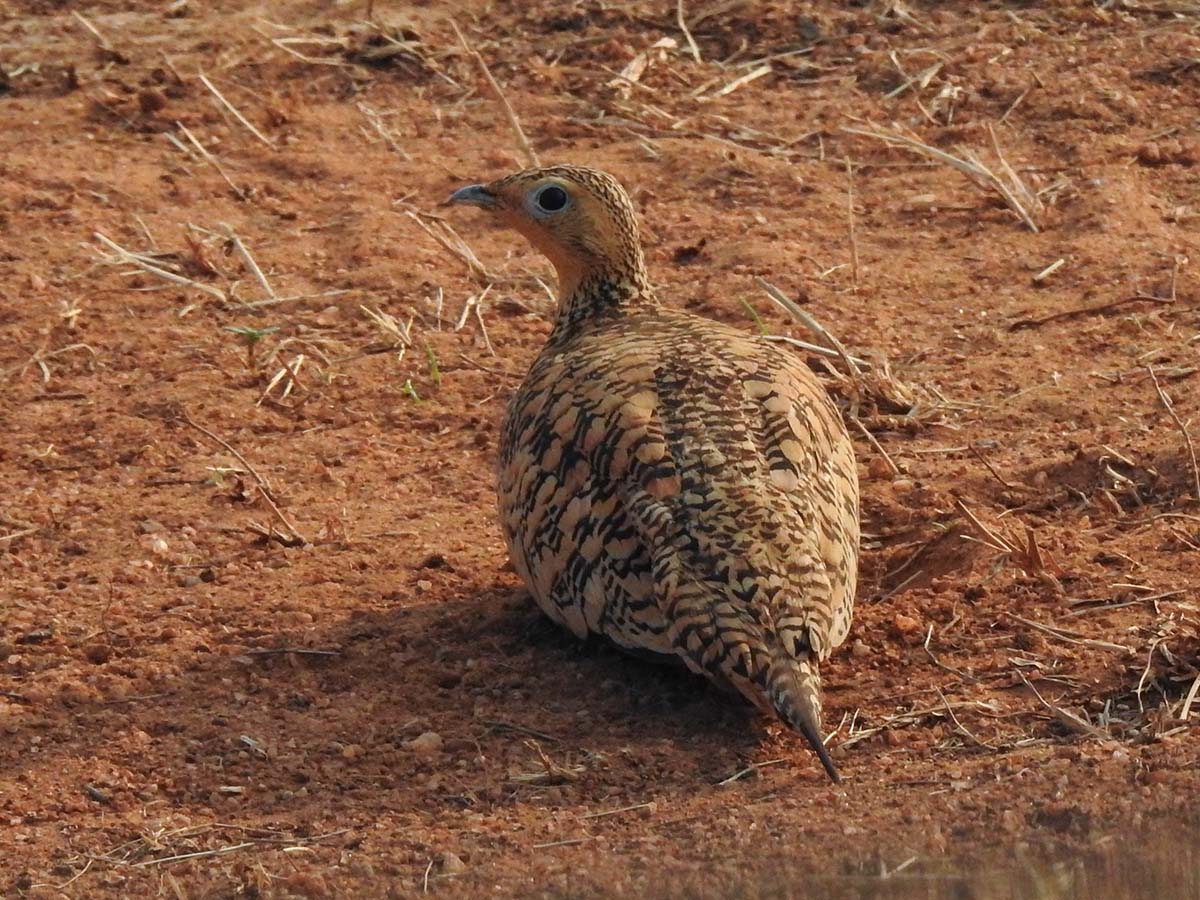
But we know all these activities are just for a short period, soon it will be occupied by humans and there won’t be any space for these wild beings. I will not be surprised if I see some new buildings in that area on my fourth visit.
We saw few Indian blackbucks inside the sanctuary but most of them were seen outside the sanctuary. We visited few farmlands in the village and there we saw grasslands. Finally in those areas we saw Indian blackbucks amidst grasses. It was really a beautiful sight.
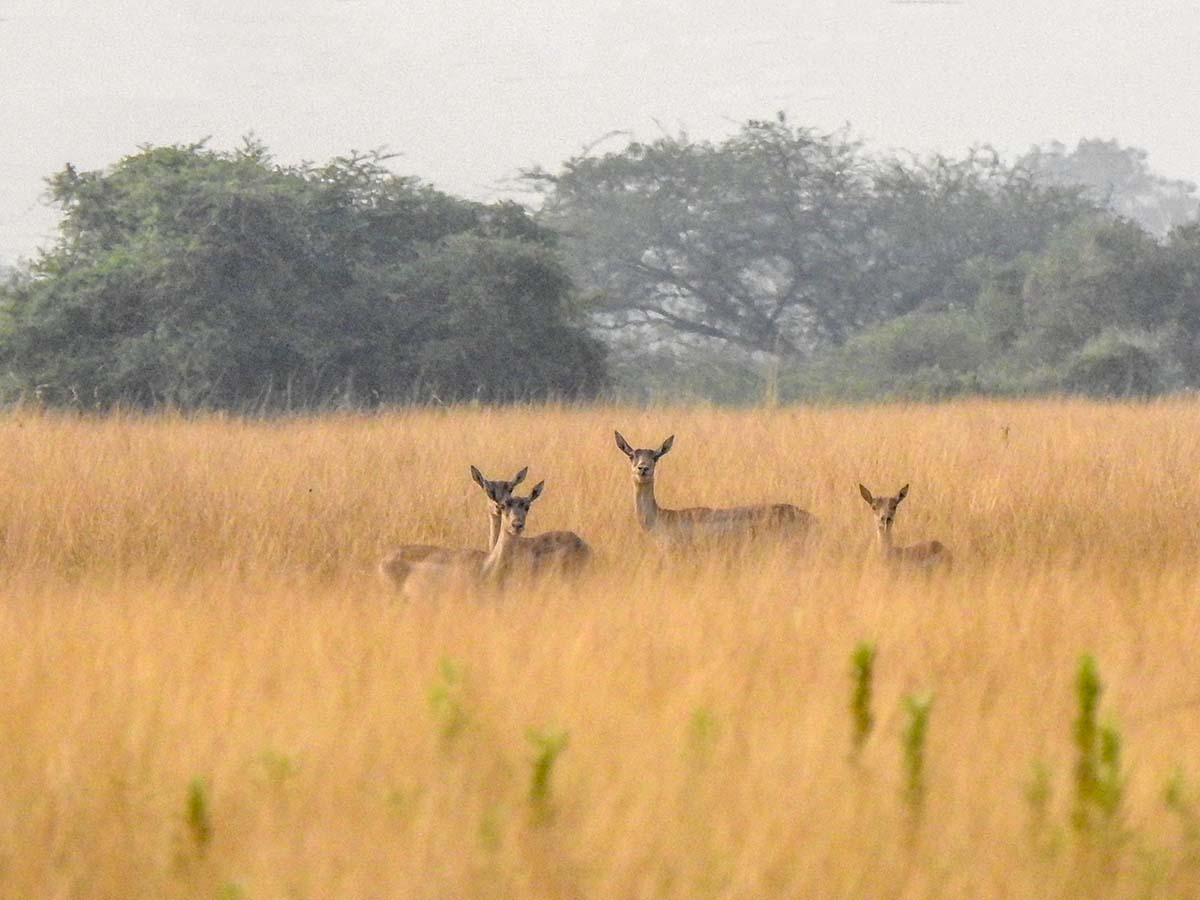
I loved the way they stopped and looked at us from distant. I don’t know how we all looked in their eyes but to my eyes they all looked so enchanting. I am not sure about the future of these antelopes in Tamil Nadu but for the time being I was happy to just see them.